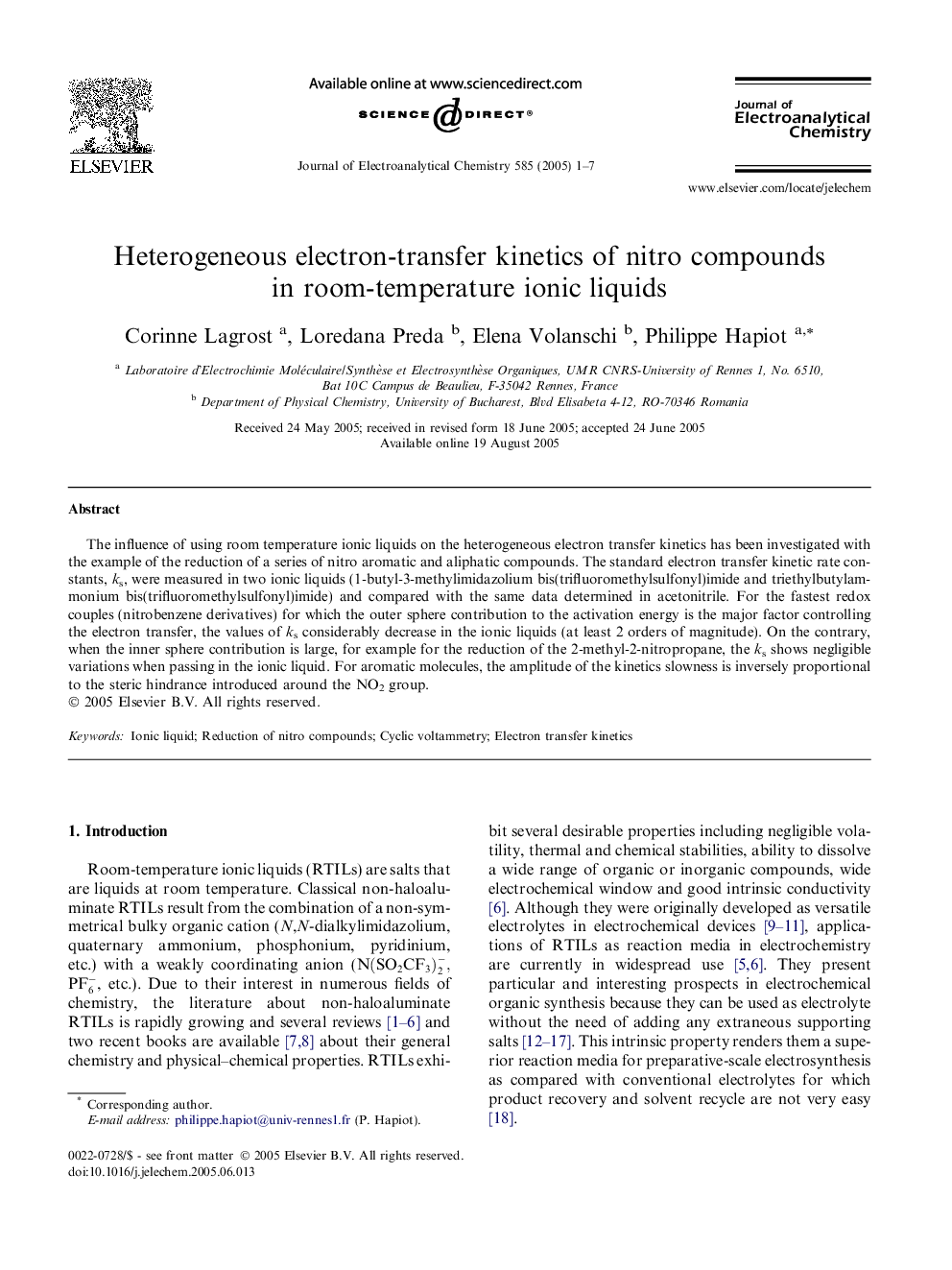| Article ID | Journal | Published Year | Pages | File Type |
|---|---|---|---|---|
| 10275734 | Journal of Electroanalytical Chemistry | 2005 | 7 Pages |
Abstract
The influence of using room temperature ionic liquids on the heterogeneous electron transfer kinetics has been investigated with the example of the reduction of a series of nitro aromatic and aliphatic compounds. The standard electron transfer kinetic rate constants, ks, were measured in two ionic liquids (1-butyl-3-methylimidazolium bis(trifluoromethylsulfonyl)imide and triethylbutylammonium bis(trifluoromethylsulfonyl)imide) and compared with the same data determined in acetonitrile. For the fastest redox couples (nitrobenzene derivatives) for which the outer sphere contribution to the activation energy is the major factor controlling the electron transfer, the values of ks considerably decrease in the ionic liquids (at least 2 orders of magnitude). On the contrary, when the inner sphere contribution is large, for example for the reduction of the 2-methyl-2-nitropropane, the ks shows negligible variations when passing in the ionic liquid. For aromatic molecules, the amplitude of the kinetics slowness is inversely proportional to the steric hindrance introduced around the NO2 group.
Related Topics
Physical Sciences and Engineering
Chemical Engineering
Chemical Engineering (General)
Authors
Corinne Lagrost, Loredana Preda, Elena Volanschi, Philippe Hapiot,
